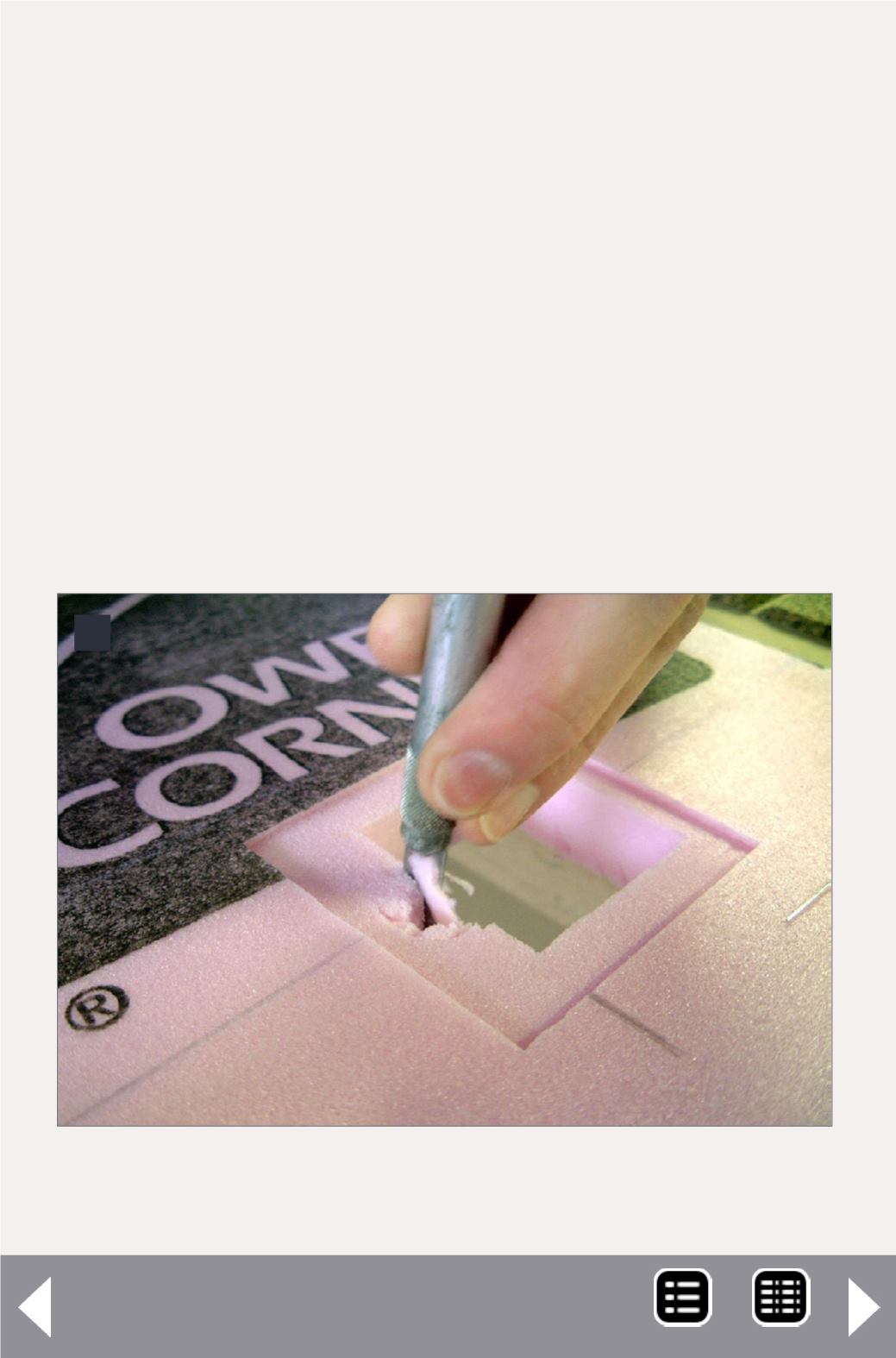
1: After turnout and the throwbar is located. A square
hole and recess is cut in the foam.
1
the bond failing increases the more the module is transported
and encounters heat/humidity fluctuations. Third, and a per-
sonal pet peeve, are excessively long actuator wires.
A different approach was required to account for these
potential pitfalls. In Free-mo, there was a lot of interest in
keeping the modules light and quick to setup. This meant
switch machine installations needed to be installed from the
"top down" rather then from the "bottom up" with plywood.
In early 2000, Brian Kreimendahl, and I developed this solu-
tion for a module set he was constructing. His modules were
substantially larger than 24", with a 42" total module width.
Foam module tops were a necessity to keep the weight of
each section manageable. We used initially single-sided cop-
per clad circuit board, but then graduated to using perfed/


